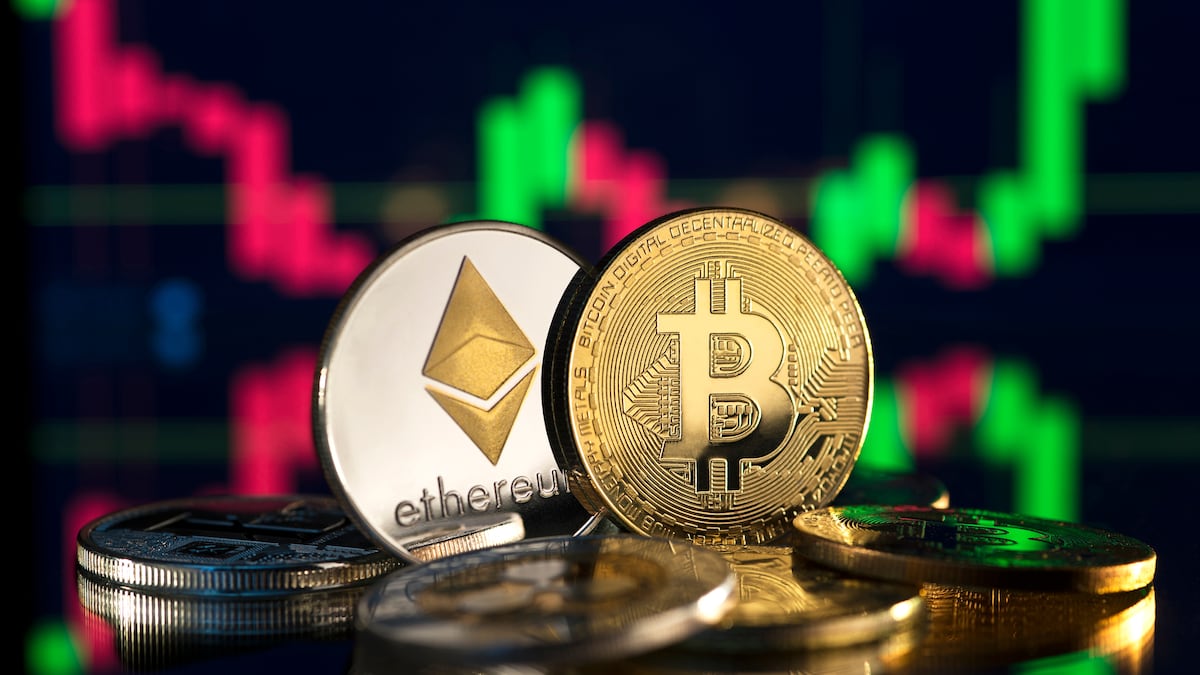- Crypto markets flipped bullish after last week’s carnage.
- Fed Chair Powell said rate hike is “unlikely.”
- High inflation and unemployment worries have passed, says analyst.
Crypto markets have recouped losses after last week’s crash, which saw Bitcoin fall as low as $56,000.
The renewed bullishness comes amid slowing job growth — a possible sign of easing inflation — and hopes of rate cuts later this year.
Today, the largest cryptocurrency is back trading at just above $65,000. The second-largest Ethereum is up 11% since its low last Wednesday.
Overall, the wider cryptocurrency market added some $200 billion, according to CoinGecko, since Federal Reserve Chair Jerome Powell spoke on May 1.
He signalled that a rate hike — when the central bank raises interest rates and increases borrowing costs for banks and businesses — would be “unlikely.”
Still, “the coast is far from clear” for the Federal Reserve to begin lowering interest rates soon, according to Noelle Acheson, author of the “Crypto is Macro Now” newsletter.
Interest rates in the United States have risen to record highs as the Federal Reserve combats rampant inflation stoked by the COVID-19 pandemic. High interest rates also increase the amount people earn on their bank holdings, another incentive to keep cash rather than spend it.
Rate hikes are thus less beneficial for stocks and riskier investments like cryptocurrencies, as seen in last week’s dramatic drop in Bitcoin and Ethereum.
In the first quarter, economic growth in the US slowed to its lowest level in nearly two years. The deceleration was partly attributed to a moderation in consumer spending and a widening trade deficit, or when a country imports more goods than it exports.
When rates are higher, business loans become more expensive, which discourages owners from expanding or hiring. The ripple effects can slow the wider economy as well.
Recent employment data released Friday, for instance, revealed the slowest job growth in six months and lower than the average monthly gain over the last year.
Stagflation concerns ‘behind us’
High unemployment combined with inflation and slowed economic activity would spell even more trouble for Powell.
Powell’s key objective these days is to avoid stagflation, an economic climate in which the economy continues to face high inflation while in a recession.
According to crypto venture capital firm Ryze Labs, that situation looks less likely to occur.
“With rate hikes off the table and markets already pricing in little to no cuts for 2024, we think this bodes constructively for risk assets,” Ryze Labs analysts told DL News.
“The worst of stagflationary headwinds might be behind us,” they said.
Crypto market movers
- Bitcoin rose by 2.6% in the past 24 hours and is trading at $65,200.
- Ethereum jumped 1.9% to $3,200.
What we’re reading
- Crypto companies raise $2.5bn in first quarter — a ‘lacklustre’ 29% increase — DL News.
- ZKasino Scammer Arrested: Dutch Authorities Seize $12.3 Million In Assets — Milk Road.
- Hedge Fund MEV Capital Trying to Bring DeFi to the Masses — Unchained.
- $69.3 Million In Wrapped Bitcoin (WBTC) Lost To Address Poisoning Scam — Milk Road.
- Visa says tens of billions of dollars of stablecoin transactions aren’t organic. Could that be true? — DL News.
Sebastian Sinclair is a markets correspondent for DL News. Have a tip? Contact Seb at sebastian@dlnews.com.
